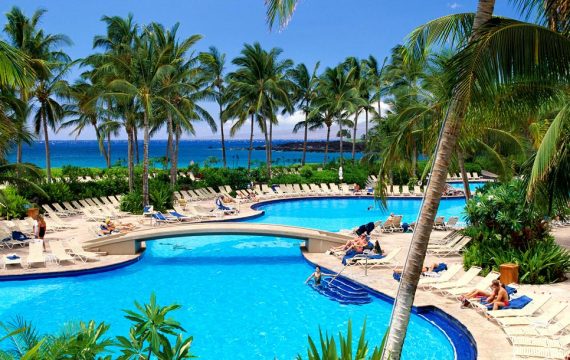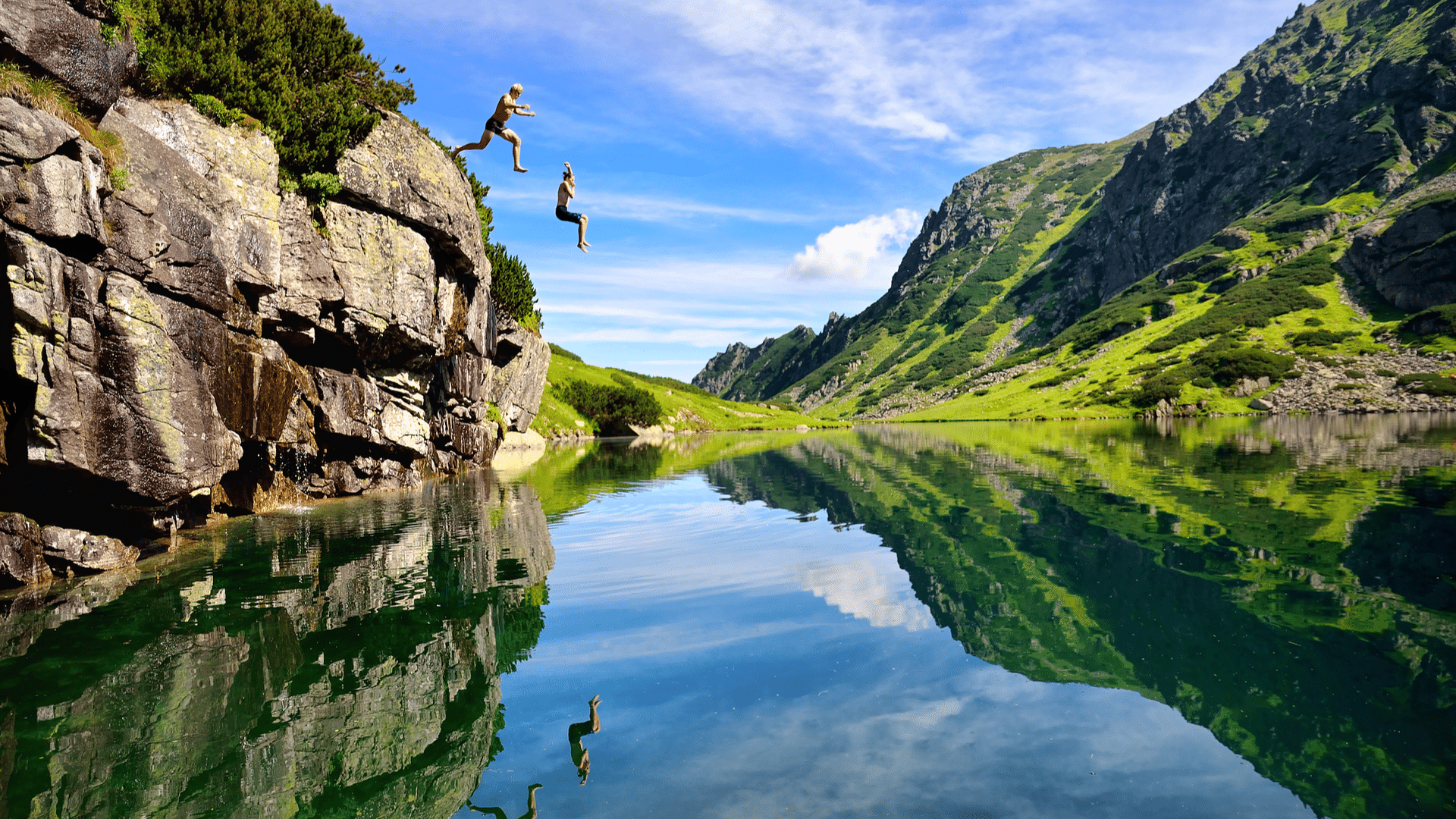Canaveral National Seashore Travel
Canaveral National Seashore: Canaveral National Seashore includes the largest natural beach on the east coast of Florida. Covering 57,661 acres and encompassing 24 miles of shoreline in Volusia and Brevard Counties, the seashore harbors more sea turtle nests annually than any other national park.
During turtle nesting season (May to October), look for yellow stakes in the sand marking the seashore’s approximately 6,000 threatened and endangered sea turtle nests. The same pristine setting that draws the turtles here each year attracts beachgoers looking for an authentic, Old Florida experience: sand, surf, sky, and no development except for the boardwalks over the sand dunes. Access the seashore from the northern Apollo entrance at New Smyrna Beach or the southern Playalinda entrance in Titusville.

Best Bet: Among other ranger-led programs are guided Turtle Watch tours in June and July. For reservations, call +1 386 428 3384, ext. 223, beginning on May 15.
Insider Tip: Come early to beat the crowds, and bring provisions. No food or drinking water is available at the beaches; restrooms are available.
When to Go: The seashore operates daily from 6 a.m. to 6 p.m. The Apollo Visitor Center in New Smyrna Beach is open from 9 a.m. to 5 p.m.
Must-Dos: Enjoy the sun and surf on pristine beaches. Swim, fish, surf, and comb for shells, sea beans, and sea glass. Hike a short self-guided trail to an ancient Native American shell mound or through a lush coastal hammock. Go boating (airboats are prohibited) or fishing (license required). To backcountry camp, make reservations by calling the Visitor Information Center at +1 386 428 3384, ext. 0.
Can you swim at Canaveral National Seashore?
We hope you will find Canaveral National Seashore to be a recreational paradise with its backcountry camping, horseback riding, canoeing, kayaking, hiking, fishing, surfing, swimming, boating, and birdwatching opportunities.
How long is Canaveral National Seashore?
Just south of New Smyrna Beach is the Canaveral National Seashore, a 57,000-acre national park nestled between the Atlantic Ocean and the Indian River. The Canaveral National Seashore is one of the longest stretches of pristine coastline in the United States.
Is Playalinda Beach open during the government shutdown?
Cape Canaveral National Seashore
The Canaveral National Seashore was created by an Act of Congress in 1975, to “preserve and protect the outstanding natural, scenic, scientific, ecologic, and historic values of certain lands, shorelines, and waters of the State of Florida and to provide for public outdoor recreation use and enjoyment of the same”.
The park has 58,000 acres (23,000 hectares) of the barrier island, open lagoon, coastal hammock, pine Flatwoods, and offshore waters along the east-central coast of Florida. It represents an excellent example of a relatively stable barrier beach backed by a productive lagoon system.
The park’s 24 miles of undeveloped beach is the longest such stretch on the east coast of Florida. Mosquito Lagoon, which comprises over two-thirds of the park, is designated an Outstanding Florida Water and as a part of the 155 mi (249 km) long Indian River Lagoon (IRL), an Estuary of National Significance. The IRL is considered the most diverse and productive estuary in North America. Mosquito Lagoon supports nationally-recognized commercial and recreational fisheries for finfish, clams, oysters, blue crabs, and shrimp. The park provides habitat for 14 federally-listed (Threatened and Endangered) animal species, ranking it second in the entire National Park Service. Three sea turtle species deposit approximately 4000 nests on the beach each year. Large numbers of waterfowl and wading birds utilize the Seashore as a migratory stopover and wintering ground. Located along the “frost line”, the park contains a rich and unique mixture of subtropical and temperate plants found nowhere except central Florida.
CANA is a superb example of a national park unit where interagency cooperation is paramount. Located at the northernmost end of Kennedy Space Center, approximately two-thirds of the park is owned by NASA and much of that is co-managed with the adjacent Merritt Island National Wildlife Refuge. The park is working with these agencies on numerous projects such as feral hog control, exotic plant removal, restoration of impacted wetlands, long-term monitoring of natural resources, and implementation of prescribed fire. Additional partnerships with state and local agencies include seagrass monitoring, mosquito control, water quality monitoring, and law enforcement patrols.
Apollo Beach Canaveral National Seashore

The term “forest”, as most people think of it, does not really fit Canaveral National Seashore; however, there are conspicuous areas of big trees. These are called hammocks, which are basically islands of trees surrounded by marsh or scrub. At CANA’s location along the “frost line”, the hammock overstory consists of temperate species, while the understory is primarily subtropical. Predominate overstory trees are live oak (Quercus virginiana) and cabbage palm (Sabal palmetto). Other common trees are southern red cedar (Juniperus silicicola), red bay (Persea borbonia), southern magnolia (Magnolia grandiflora), hackberry (Celtis laevigata), and pignut (Carya glabra). Typical understory trees and shrubs include nakedwood (Myrsianthes fragrans), marlberry (Ardesia escallanioides), white stopper (Eugenia axillaris), and yaupon holly (Ilex vomitoria). A keen observer can find several species of rare orchids, bromeliads, and ferns growing on the limbs of the overstory trees, particularly large live oaks.
Two other tree communities are common in the park – oak scrub and pine Flatwoods. Oak scrub has much smaller trees than the hammocks, generally being 10 feet or less in height. It is comprised of several live oak species, including myrtle oak (Quercus myrtifolia), Chapman’s oak (Q. chapmanii), sand live oak (Q. geminata), and some live oak (Q. virginiana). These are called live oaks because they retain green leaves throughout the winter. Several federally-listed animals and species of concern, such as the Florida scrub-jay, eastern indigo snake, and gopher tortoise live in the scrub oak habitat. Scrub oak is a fire-adapted community; under natural conditions, it will burn every 7-20 years. This keeps the oaks under six feet tall and maintains open areas. If the fire is excluded, the trees grow to heights of 12-15 feet, open areas close in and the habitat is no longer suitable for the jay, snake or tortoise. The park is implementing a prescribed fire program to return fire to its vital role in the CANA ecosystem.
Pine Flatwoods contain large slash pine trees (Pinus elliottii), up to 30 meters high, in an open canopy. Main shrub species include saw palmetto (Serenoa repens), myrtle oak, fetter bush (Lyonia lucida), stagger bush (L. fruticose), wax myrtle (Myrica cerifera), and gallberry (Ilex glabra). The pines are self-pruning, leaving a large gap between their branches and the shrub layer. The pine Flatwoods are also fire-adapted and if not burned periodically, will degrade as wildlife habitats. At CANA the bald eagles nest in the tallest pine trees. Biologists believe that the number of nesting eagles in the park is limited by the number of suitable nesting trees. Therefore, it is critical to allow the fire to stimulate the regeneration of smaller pines and reduce high fuel loads that could kill nesting trees.
Canaveral National Seashore Playalinda Beach
Mosquito Lagoon is about one mile wide and averages four feet deep. It is basically a dead-end sack, connected to the ocean by Ponce de Leon Inlet, 10 miles north of the park and to the Indian River by the Haulover Canal, on the western side of the lagoon. As a consequence, there is little flushing, and tides, primarily wind-driven, are measured in inches. Several characteristics distinguish the northern third of the Mosquito Lagoon from the remainder of the lagoon. It contains numerous islands, consisting of the hammock, mangrove, and high marsh vegetation, while the southern two-thirds of the lagoon is open. Also, many small, intertidal oyster reefs occur in the northern portion of the lagoon. This is partially due to the closer proximity to Ponce de Leon Inlet.
Mainland portions of the park consist of pine Flatwoods, live oak/cabbage palm hammock, and live oak scrub. A system of ridges and alternating swales can be seen in the south end of the park, revealing the location of former shorelines formed during prior geologic periods. The highest point in the park is actually man-made, a 35 feet high mound of oyster shells constructed by Native Americans between 800 and 1400 A.D. Called Turtle Mound, its summit offers a magnificent view of the lagoon, ocean, and barrier island.
Several other significant man-made alterations should be also mentioned. A channel 12 feet deep is maintained along the northwest side of Mosquito Lagoon for the Intercoastal Waterway, which then extends eastward through the Haulover Canal about halfway down the west side of Mosquito Lagoon and into the Indian River. Because it is deeper than the rest of the lagoon, it attracts fish that prefer deeper water and it may serve as a sink for muck and associated pollutants, such as heavy metals. An even greater impact on the lagoon has been the alteration of marsh areas for mosquito control. This included digging an extensive system of ditches, beginning in the 1920s, and construction of miles of earthen dikes in the 1960s and 1970s to create impoundments. Many of these dikes are now being breached or completely removed to reconnect valuable marsh areas with the lagoon system.
Canaveral National Seashore Visitor Center
Part of America’s national park system, spectacular Canaveral National Seashore includes 24 miles of undeveloped white-sand beach. Two roads squeeze along a skinny bridge of barrier island, one heading 6 miles south from the small beach town of New Smyrna Beach and another 6 miles north from Merritt Island National Wildlife Refuge. Each road dead-ends, leaving about 16 miles of wilderness beach between them.
Created by Congress in 1975, the Canaveral National Seashore was set aside as land to provide an undeveloped buffer to protect the security of NASA aerospace facilities at Cape Canaveral. The area had been a U.S. missile-testing site since 1950, and NASA started operations there in 1958.
Wildlife is abundant at Lake Woodruff National Wildlife Refuge near De Leon Springs but many animals at the refuge are shy, nocturnal, and rarely observed by visitors. Patient birders are rewarded with sightings of some of the 230 species of birds that arrive seasonally. Be on the lookout for hawks (red-shouldered hawk, red-tailed hawk, swallow-tailed kite), shorebirds (killdeer, lesser yellowlegs, Wilson’s snipe), songbirds (barn swallow, tufted titmouse, Carolina wren), wading birds (white ibis, great egret, great blue heron), and waterfowl (wood duck, ring-necked duck, blue-winged teal). Seven federally listed endangered species inhabit the refuge, including the Florida manatee and gopher tortoise. Best Bet: Click here for information about wildlife-watching by season.
Canaveral National Seashore Beach
Canaveral National Seashore (CANA) has a diverse and fascinating variety of aquatic and terrestrial animals. The park provides habitat for 14 species of federally-listed threatened or endangered animals, the second greatest number in the entire National Park Service.
- Loggerhead sea turtle (Caretta caretta)
- Green sea turtle (Chelonia mydas)
- Leather back sea turtle (Dermochelys coriacea)
- Kemps’s Ridley sea turtle (Lepidochelys kempii)
- Hawksbill sea turtle (Eretmochelys imbricata)
- Eastern indigo snake (Drymarchon coraisi couperi)
- Atlantic salt marsh snake (Nerodia clarkii taeniata)
- Gopher Tortoise (Gopherus polyphemus)
Four birds:
- Bald eagle (Haliaeetus leucocephalus leucocephalus)
- Wood stork (Mycteria americana)
- Florida scrub jay (Aphelocoma coerulescens coerulescens)
- Arctic peregrine falcon (Falco peregrinus tundrius)
Three mammals:
- West Indian Manatee (Trichechus manatus)
- Southeastern beach mouse (Peromyscus polionotus niveiventris)
- Right whale (Balaena glacialis)
The park and adjacent Merritt Island National Wildlife Refuge are well known for great birding and are favored destinations for avid bird watchers. In addition to the three species listed above, large numbers of migrating waterfowl, wading birds, and shorebirds can be seen during the spring and fall migration periods and winter.
CANA is equally renowned for outstanding fishing in the ocean surf and Mosquito Lagoon. The lagoon also harbors abundant populations of oysters, clams, blue crabs, and shrimp.
Topics #apollo beach canaveral national seashore #camping near canaveral national seashore #canaveral national seashore #canaveral national seashore annual pass #canaveral national seashore apollo beach #canaveral national seashore beach #canaveral national seashore beach camping #canaveral national seashore beaches #canaveral national seashore beaches orlando #canaveral national seashore camping #canaveral national seashore camping map #canaveral national seashore camping reservations #canaveral national seashore fishing #canaveral national seashore florida #canaveral national seashore hotels #canaveral national seashore hours #canaveral national seashore map #canaveral national seashore merritt island national wildlife refuge #canaveral national seashore near orlando #canaveral national seashore new smyrna #canaveral national seashore new smyrna beach #canaveral national seashore nude #canaveral national seashore nude beach #canaveral national seashore orlando #canaveral national seashore park #canaveral national seashore park new smyrna beach #canaveral national seashore parking lot 5 #canaveral national seashore playalinda beach #canaveral national seashore tides #canaveral national seashore titusville #canaveral national seashore titusville fl #canaveral national seashore visitor center #canaveral national seashore weather #canaveral seashore national park #cape canaveral national seashore #cape canaveral national seashore camping #cape canaveral national seashore fl #cape canaveral national seashore hours #cape canaveral national seashore map #cape canaveral national seashore visitor center #directions to canaveral national seashore #fl #hotels near canaveral national seashore #is canaveral national seashore open #national canaveral seashore #national seashore canaveral #national seashore cape canaveral #new smyrna beach canaveral national seashore #playalinda beach canaveral national seashore #weather canaveral national seashore #where is canaveral national seashore










